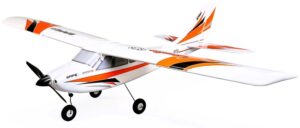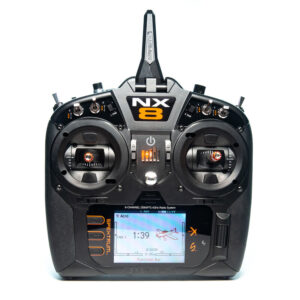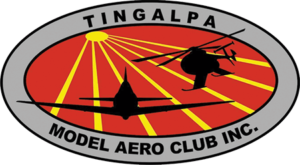Introduction
Welcome to the hobby of R/C model aviation! As a newcomer, it is easy to be overwhelmed and frustrated. That’s why we’re here to help. Those that seek assistance in choosing the perfect first trainer and flight instruction have a better chance of success than those who try to train themselves.
If you are interested in becoming a RC pilot the best place to start is to come and visit us. You can meet the members, ask questions, and we can find out what you’re interested in and help you get started. If you contact one of the Committee Members or Flight Instructors first, they will ensure there is someone available to answer your questions on the day.
There are many different types of trainer planes, engines and radio systems available to the new pilot. The information provided below is intended to help you understand what’s involved in getting started and successfully gaining your solo wings. We highly suggest meeting with an instructor at the field before you purchase anything, they will be able to help you make specific decisions on the best plane and equipment to suite your interests, ability and budget.
On the question of how much will it cost, there are many options, but we recommend getting the best equipment you can afford, it will last longer and let you expand your abilities in the future with minimal additional investment. Again, your instructor can help you decide.
Trainer Aircraft
As a student, you’ll want a trainer aircraft that is stable and easy to control. Also, a trainer should be able to withstand the typical hard landings and bumps that is common while a student is learning. The trainer aircraft should be easily repairable, and or parts should be readily available.
The best model to start with is a fixed wing aircraft and our instructors recommend it should have the following characteristics:
- Have a high wing, with dihedral and a flat bottom aerofoil, to give it inbuilt stability
- Be of reasonable size with a wing span of about 1.5 m or greater to help with visibility
- Have a strong undercarriage with reasonable size wheels
- Be capable of basic aerobatic manoeuvres like loops and rolls.
- Be heavier than 2 kg for your Silver wings or lighter for Bronze wings
Many of our new pilot’s train on electric powered models that have become more common recently, some will train on traditional glow powered aircraft. If you do not want to build your own model from scratch, there are many options to quickly get started including: Almost Ready to Fly (ARF), Plug and Play (PNP) and Bind and Fly (BNF) kits available from your local hobby store or on-line.
Radio
The transmitter is the heart of the RC system and is the box that you hold and use to control your plane. Each time you move a stick or flick a switch on the transmitter a radio signal is transmitted via the antenna to the receiver in the plane. Radios use 2.4GHz ‘spread spectrum’ technology allowing many planes to fly safely together.
Some things to consider include:
- Channels – a minimum or 6 channels is recommended although 8 provides more future expandability for additional functions like flaps and retractable undercarriage.
- Mode – the configuration of the gimbals and the control surfaces. e.g. Mode 2 provides the Elevator and Alerion on the right hand stick and operates like a yoke on a real plane, with the rudder and throttle on the left stick. Mode 1 separates the Elevator and Alerion on different gimbles and is more prevalent in Australia, although Mode 2 is becoming more popular. There is much debate about which mode is better and once you have learnt to fly on one mode it is difficult to change.
- Budget or Standard – many brands differentiate their range, providing a budget option with fewer bells and whistles to make the entry price lower.
- Brand – the most popular today is Spektrum, but there are many others. Having a radio system that is compatible with the instructors will make setting up a buddy box easier.
Other Equipment
Much like the process of choosing an aircraft and radio, selecting the proper support equipment can be overwhelming. Once again, look to your instructor for guidance. They can help you choose good quality, basic gear to get you started. Much of this equipment will last you for forever, some will be replaced over time as it wears out or you discover personal preference for one item over another with experience. The important thing to remember is that you need only the basics to begin training.
You will require fuel and pump, a electric starter and a glow ignitor for the glow engine or batteries and field charger for your electric motor, a restraint device to secure the plane when the engine is running as well as spare props and assorted tools. In addition, you will need an 12-volt battery to power some of these devices and a box of some sort to carry everything.
All of your equipment can be purchased either at a local hobby shop or online. Also, rest assured that anything missing from your kit can be borrowed at the field as long as you remember to return the item when finished. Most of us can clearly remember our early days in the hobby and are willing to help a student in any way possible.
Once you have purchased the gear, your instructor will be happy to answer your questions, but will encourage you to assemble the kit yourself. This is one way you can begin to understand the workings of a model aircraft. Once complete, however, you MUST have your aircraft & radio system checked by a flight instructor before you attempt to fly. Our experience says that 3 out of 4 new planes will need some additional work that should not be done at the field due to either a mechanical or safety concern. It could be as simple as an uncharged battery or as dangerous as a cracked glue joint that went unnoticed. Virtually all of these issues can be fixed with a little time and effort. Unfortunately, the plane may not fly that day.
Flight Instruction
The TMAC Flight Instructors are certified by the MAAA and are available to help you through the learning process and to gain your solo wings. They can also help you progress through your Gold Wings and beyond. Before you can fly on your own at the TMAC field you must have achieved at least your Bronze Wings.
Feel free to talk to one or more of our instructors and find someone who you feel comfortable working with and is available to help you on the days you want to fly => For a full list of TMAC Flight Instructors click here: Flight Instructor List
Most of our instructors prefer to utilize the “Buddy-Box” method to train their students. This tandem radio system allows you to hold a radio transmitter when flying, while at the same time, your instructor holds the primary transmitter. If you experience difficulties your instructor can assume flight control with the flip of a switch. Training with this method versus the hand-it-back-and-forth method significantly adds to the pleasure of learning.
Some students learn quickly (a few weeks), but most will take a couple months to solo depending on how much training they are able to put in. Although it’s REALLY hard to estimate how much flight time it will take before you are able to solo, you should count on 40-50, 5-10 minute flights to start.
If you wish to learn to fly with us, get in touch with one our instructors so they can answer your questions and discuss the process. You can then meet at the field and begin learning how to get your gear into the air!
